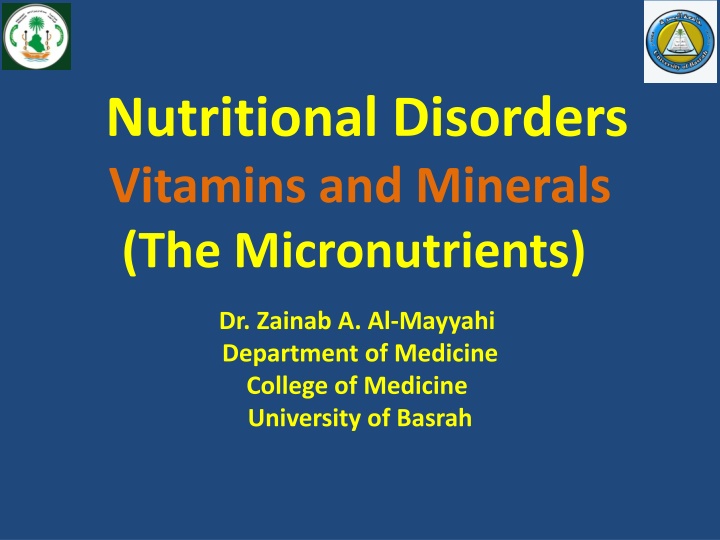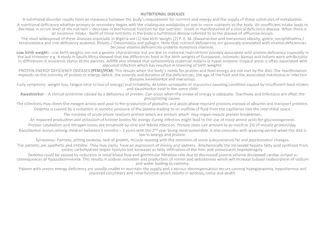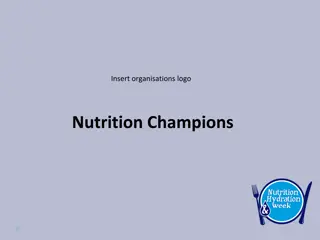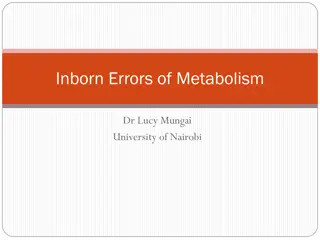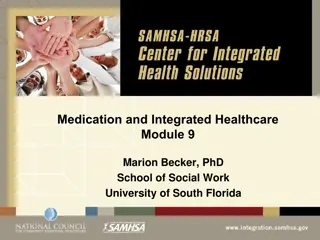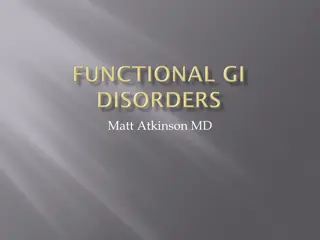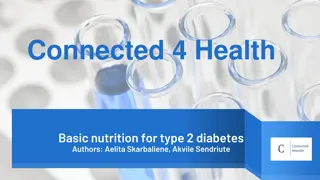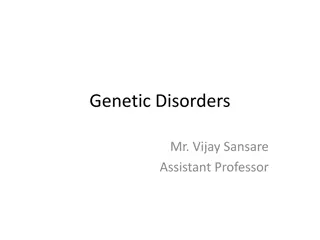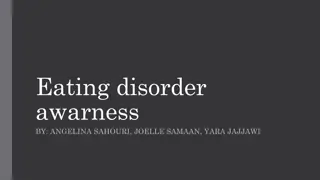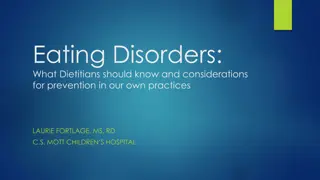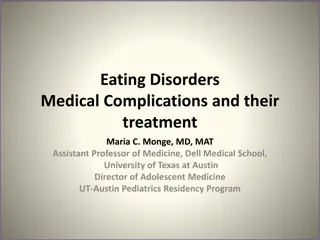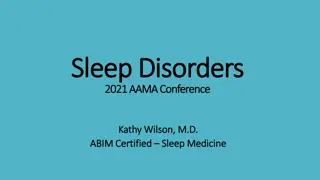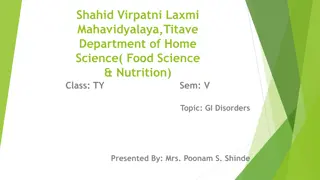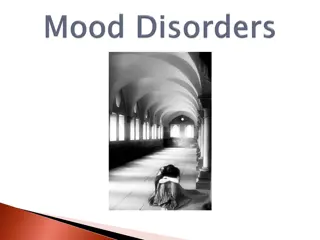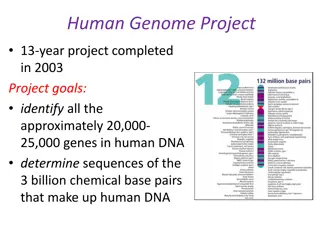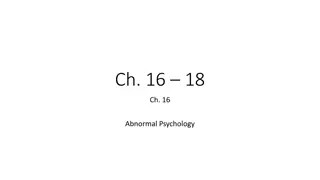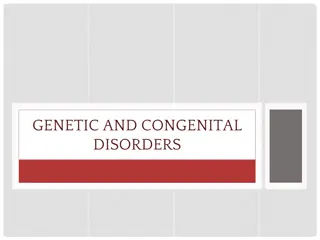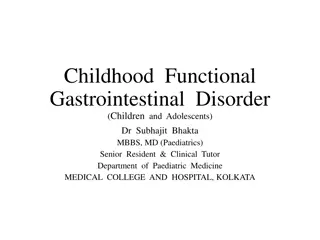Nutritional Disorders
Delve into the world of vitamins and minerals with a focus on Vitamin D. Learn about its sources, functions, daily requirements, and metabolism processes. Explore the causes, clinical features, and treatment options for deficiencies related to these micronutrients. Enhance your knowledge to promote better health and well-being.
Download Presentation

Please find below an Image/Link to download the presentation.
The content on the website is provided AS IS for your information and personal use only. It may not be sold, licensed, or shared on other websites without obtaining consent from the author.If you encounter any issues during the download, it is possible that the publisher has removed the file from their server.
You are allowed to download the files provided on this website for personal or commercial use, subject to the condition that they are used lawfully. All files are the property of their respective owners.
The content on the website is provided AS IS for your information and personal use only. It may not be sold, licensed, or shared on other websites without obtaining consent from the author.
E N D
Presentation Transcript
Nutritional Disorders Vitamins and Minerals (The Micronutrients) Dr. Zainab A. Al-Mayyahi Department of Medicine College of Medicine University of Basrah
Objectives By the end of this lecture you should be able to Define Vitamins Classify vitamins Identify causes of vitamins deficiencies Describe the clinical features of vitamins deficiency and excess Treat vitamins related nutritional disorders 2 University of Basrah/College of Medicine/Department of Medicine
Vitamin D A group of sterol compounds which have a vital role in bone metabolism. Vitamin D and parathyroid hormone are the main regulators of calcium and phosphorous in the body. Tow pro-forms of vitamin D: Cholecalciferol (D3). Ergocalciferol (D2) . 4 University of Basrah/College of Medicine/Department of Medicine
Sources of vitamin D Cholecalciferol (D3) : 1- formed in the skin after exposure to sun. 2- Animal source like fish, fish oil, milk, eggs , liver etc. Ergocalciferol (D2) : 1- Fortified cereals. 2- Synthetic supplements. 5 University of Basrah/College of Medicine/Department of Medicine
6 University of Basrah/College of Medicine/Department of Medicine
Daily requirement of vitamin D Non-pregnant adults : 25 g /day. Pregnant women , infants and lactating women : 100 g /day. 1 g = 40 IU 7 University of Basrah/College of Medicine/Department of Medicine
25 Hydroxylase 25 HCC(Calcidiol) 1,25 DHCC(Calcitriol) 1-Alfa Hydroxylase 8 24,25 DHCC University of Basrah/College of Medicine/Department of Medicine parathyroid hormone
1-Alfa hydroxylation The activity of 1- Alfa hydroxylase depends on: Calcium level ( low level increase activity) Phosphorous level ( low level increase it) Level of Calcitriol (decrease activity) The parathyroid hormone (stimulate activity) 9 University of Basrah/College of Medicine/Department of Medicine
Mechanism of action of vitamin D Active vitamin D will bind to specific receptor VDR vitamin D receptor in target tissues and exert it s metabolic action. 1,25 DHCC has 3 times more affinity to these receptor than other vitamin D metabolites. 10 University of Basrah/College of Medicine/Department of Medicine
Functions of active vitamin D 1. Increase calcium and phosphate absorption from the small intestine. 2. Increase calcium re-absorption from the kidneys. 3. Increase bone mineralization. 4. Inhibit parathyroid hormone secretion. 11 University of Basrah/College of Medicine/Department of Medicine
Vitamin D transport and storage 25 HCC is the storage form of vitamin D in the liver 88% of 25 HCC circulates bound to specific vitamin D binding protein, 0.03% is free, and the rest circulates bound to albumin 12 University of Basrah/College of Medicine/Department of Medicine
Functions of vitamin D Bone metabolism: increase Ca absorption from gut and kidneys and increase deposition of Ca in bones (solidification of bones). Retard cell proliferation and promote cell differentiation Anti-cancer effect ( breast and colonic cancer). Pharmacological role in treatment of psoriasis. 13 University of Basrah/College of Medicine/Department of Medicine
Other rules for vitamin D Vitamin D receptors was found in most tissues (e.g., immune cells, brain, breast, colon, and prostate) and is thought to be important for: Prevention of cardiovascular diseases Immune function.( type 1 diabetes) 14 University of Basrah/College of Medicine/Department of Medicine
Other rules for vitamin D Brain function ( depression, multiple sclerosis) Prevention of hypertension Low grade inflammation ( tuberculosis) 15 University of Basrah/College of Medicine/Department of Medicine
Causes of vitamin D deficiency Limited sun exposure. Malnutrition. Malabsorption. Liver diseases. Renal diseases (CKD and nephrotic syndrome). Drugs like antiepileptics phenytoin and phenobarbital decrease hepatic level of vit. D. 17 University of Basrah/College of Medicine/Department of Medicine
Clinical features of Vitamin D deficiency Vitamin D deficiency cause bone demineralization (loss of bone matrix). *Rickets is demineralization of growing bone (before closure of the epiphyseal plates). *Osteomalacia is bone demineralization after closure of the epiphyseal plates. 18 University of Basrah/College of Medicine/Department of Medicine
Clinical features of Vitamin D deficiency Symptoms of hypocalcaemia: 1. Carbopedal spasm. 2. Facial twitching 3. Hypocalcaemic tetani 4. Seizers. 19 University of Basrah/College of Medicine/Department of Medicine
Other features of Vitamin D deficiency Burning sensation in the mouth Diarrhea Insomnia Nervousness Myopia Scalp sweating 20 University of Basrah/College of Medicine/Department of Medicine
Vitamin D deficiency syndromes Osteomalacia and Rickets
Osteomalacia It is bone demineralization after closure of the epiphyseal plates . The normal bone is replaced by soft osteoid that contains less minerals than normal bone (loss of bone matrix). Other cases of osteomalacia are : bone tumors, excess Aluminum and Florid, and drugs like bisphosphonates. 22 University of Basrah/College of Medicine/Department of Medicine
Clinical features of Osteomalacia 1. Back pain , bone pain and tenderness, spontaneous fractures (Pathological fractures). 2. Proximal muscle weakness , Waddling gate and difficulty in climbing stairs or getting out of a chair. 3. Symptoms of hypocalcaemia 23 University of Basrah/College of Medicine/Department of Medicine
Diagnosis of osteomalacia Clinical features. Biochemical tests. Radiological tests. Bone biopsy. 24 University of Basrah/College of Medicine/Department of Medicine
Biochemical investigations Decrease calcium level . Decrease phosphate level. Decrease vitamin D level (25 HCC). Increase parathyroid hormone level. Increase alkaline phosphatase level. 25 University of Basrah/College of Medicine/Department of Medicine
Radiological investigation X-rays: Normal in early disease. Focal radiolucent areas Looser's zones may be seen in ribs, pelvis and long bones. Radiographic osteopenia Pathological fractures. 26 University of Basrah/College of Medicine/Department of Medicine
27 University of Basrah/College of Medicine/Department of Medicine
28 University of Basrah/College of Medicine/Department of Medicine
University of Basrah/College of Medicine/Department of Medicine 29
Radiological investigation Radionuclide bone scan: Total body technetium bone scan in osteomalacia shows increase uptake (hot spots) in pseudo- fractures areas. 30 University of Basrah/College of Medicine/Department of Medicine
Bone biopsy 31 University of Basrah/College of Medicine/Department of Medicine
Treatment Correction of underlying cause Ergocalciferol (250-1000 g daily) for 3-4 months then maintenance of 10-20 g daily. Calcium supplements. Higher doses required for patients with malabsorption. Active vitamin D Calcitriol should be used for patients with renal diseases. 32 University of Basrah/College of Medicine/Department of Medicine
Prevention Exposure to sunlight. Adequate intake of vitamin D rich foods. Prophylactic vitamin D (10-20 g) for risk groups , lactating women ,elderlies and patients on antiepileptic drugs. 33 University of Basrah/College of Medicine/Department of Medicine
Rickets Rickets is demineralization of growing bone before closure of the epiphyseal plates (growing bone). Mostly affect infants who are kept indoor or covered and are exclusively feed on natural milk. 34 University of Basrah/College of Medicine/Department of Medicine
Clinical features of Rickets Muscle hypotonia (floppy infant). Delayed development (teething , crawling, walking). Delayed closure of anterior fontanelle. Craniotabes : a cracking feeling during pressure on the bones of the skull due to unossified areas is the earliest bone sign of rickets. 35 University of Basrah/College of Medicine/Department of Medicine
Clinical features of Rickets Bossing of the frontal and parietal bones. 36 University of Basrah/College of Medicine/Department of Medicine
Clinical features of Rickets Enlargement of epiphyses at the lower end of the radius. 37 University of Basrah/College of Medicine/Department of Medicine
Clinical features of Rickets Swelling of the costochondral junctions of the ribs. (rickety rosary) 38 University of Basrah/College of Medicine/Department of Medicine
Clinical features of Rickets When the infant start walking deformities of the legs will develop. bow legs 39 University of Basrah/College of Medicine/Department of Medicine
Clinical features of Rickets Later, if untreated a lateral collapse of both chest walls (Harrison's sulcus) may appear. 40 University of Basrah/College of Medicine/Department of Medicine
Diagnosis of Rickets Clinical features. Biochemical tests . X-rays: wrist x-ray will shows widening of the epiphysis (cupping) which is highly suggestive of rickets. 41 University of Basrah/College of Medicine/Department of Medicine
X-rays in rickets 42 University of Basrah/College of Medicine/Department of Medicine
Treatment of rickets Ergocalciferol (250-1000 g daily) for 3-4 months then maintenance of 10-20 g daily. Encourage intake of vitamin D rich foods. 43 University of Basrah/College of Medicine/Department of Medicine
Prevention of Rickets Sunlight and vitamin D rich foods. Prophylactic vitamin D drops for infants at risk of vitamin D deficiency. 44 University of Basrah/College of Medicine/Department of Medicine
Hypervitaminosis D High doses of vitamin D can cause life- threatening hypercalcemia. Calcium mainly deposit in the kidneys and brain. symptoms include weakness, vomiting , constipation , lassitude, impaired memory, dementia, delirium, and coma. Treatment include, fluids , diuresis, and sometimes corticosteroids. 45 University of Basrah/College of Medicine/Department of Medicine
